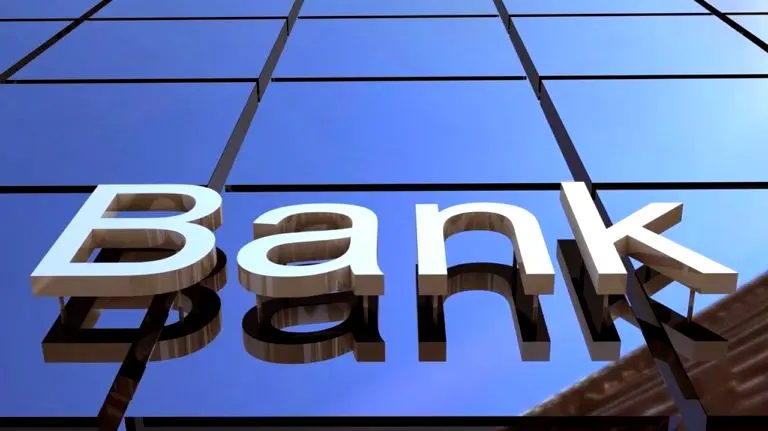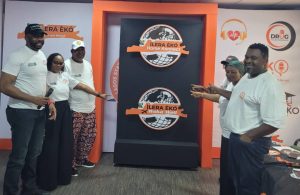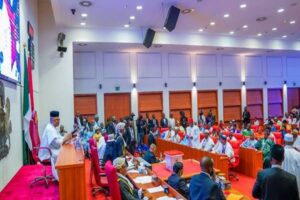
Most Nigerian firms presently servicing long term facilities are more vulnerable to interest rates because they have higher debt servicing costs.
Caverton Offshore Support Plc has interest coverage ratio of 1.35; Total Nigeria Plc, 1.01, Livestock Feeds Plc, 1.05, and Dangote Sugar, 0.09, according to permutations.
The Interest Coverage Ratio (ICR), also known as the Times Interest Earned (TIE) ratio, is a financial metric that assesses a company’s ability to pay its interest expenses on outstanding debt. It’s calculated by dividing the company’s earnings before interest and taxes (EBIT) by its interest expense.
Even as interest rates are high, the interest coverage ratio of most companies is above the threshold as they are able to sustain strong earnings amid a challenging environment.
The Monetary Policy Committee (MPC) of the Central Bank of Nigeria retained the Monetary Policy Rate at 27.50 per cent, marking its second consecutive hold in 2025, meaning firms often borrow at above 30% per annum.
Higher interest rates are deleterious to firms or businesses because it makes borrowing more expensive and magnifies the finance costs, which in turn squeezes cash flow and profit margins.
The country’s headline inflation rate dropped to 23.71 per cent in April 2025 from 24.23 per cent in March, according to data gathered by the National Bureau of Statistics (NBS).
“The MPC noted the relative improvements in some key macroeconomic indicators which are expected to support the overall moderation in prices in the near to medium term,’ said Olayemi Cardoso, the Central Bank of Nigeria (CBN) Governor.




Informative and concise. I recommend https://pdfpanel.com to my peers.
Primobolan will decrease endogenous testosterone levels notably, yet we now have discovered it to be the least suppressive anabolic
steroid. Primobolan comes in oral or injectable form and is often stacked with other dry steroids, similar to trenbolone,
to reinforce its effects. Acne and hair loss are other unwanted facet effects we see as a outcome of trenbolone’s excessive androgenic ranking.
An Oxandrolone cycle is widespread amongst those who have never
used anabolic steroids and desire a compound
that causes little unwanted effects and is also orally active.
Anavar’s C17α-alkylation enhances oral bioavailability by preventing first-pass liver metabolism, although it additionally will increase hepatic pressure.
With a half-life of approximately 9 to 10 hours, sustaining secure plasma concentrations requires
a quantity of every day doses. Not Like many anabolic steroids, Anavar does not convert to estrogen, eliminating issues
about gynecomastia or water retention. Anavar, a synthetic anabolic steroid derived from dihydrotestosterone (DHT),
is extensively used for muscle preservation and performance
enhancement. Its delicate androgenic properties make it a most well-liked alternative amongst athletes and medical sufferers requiring anabolic support.
Figuring Out the appropriate dose requires cautious consideration of multiple components to maximize advantages whereas minimizing
dangers.
Combining a quantity of steroids may be complicated and increases
the danger of side effects. It is finest to consult a healthcare skilled earlier than contemplating
such an strategy. CrazyBulk, the producer of those legal alternate options, is a good
and well-known firm in the health industry, offering a spread of
products to help various fitness targets. When combined with a proper diet and exercise routine,
Anvarol and Anadrole can help you obtain your required physique with
out compromising your well being.
This is an area the place one’s particular cycle will go a good distance towards figuring out what
on-cycle support they use. For instance, an aromatase inhibitor like aromasin or arimidex isn’t needed
for an Anavar-only cycle because this drug doesn’t convert to estrogen. However, liver
assist is all the time beneficial because that is an alkylated steroid.
To save complicated arithmetic, you could carry out 2
injections per week, which would require 100 mg per injection (0.5 ml) for the primary 2 weeks.
Testosterone produces distinctive positive aspects without excessively harsh unwanted aspect effects.
Which one you are taking will rely on your private choice for administration and what you want to achieve from
your cycle. Millions of individuals around the globe
take steroids; however, solely a small percentage achieve this in a accountable manner.
An overdose of prednisone just isn’t anticipated to provide
life threatening symptoms. Androgen receptors are found in lots of cells within the body and
are what make anavar work. Protein synthesis and nitrogen retention go up due to this relationship.
In addition, this steroid has been proven to lower body fats by making individuals leaner.
For women thinking about utilizing Anavar to enhance
their fitness routine, there are several essential methods to maximise the effectiveness of this complement.
A finely tuned consuming plan offers the physique the vitamins it must
handle the extreme workouts that accompany Anavar use, making it potential to see faster features and fat loss.
If you have a historical past of psychological well being issues, approaching with caution is recommended.
Bodybuilders not often take greater than 100 mg of Anadrol per day,
as this is considered a high dose. Thus, this technique has the potential to increase outcomes but
in addition the severity of side effects. Apparently, many medications will say on the
box not to drink with grapefruit juice, as medications are clearly dosed primarily based upon the
CYP3A4 enzyme working as normal. We have had patients drink 250 ml of grapefruit juice
every 12 hours, which kept CYP3A4 constantly deactivated throughout the day.
CYP3A4’s job is to remove international molecules by detecting toxins within the body.
Others use capsule cutters to split 10 mg tablets in half, giving them 4 x 5 mg doses.
If 2.5 mg drugs are obtained, this reduces the necessity to cut any of the tablets.
DHT (dihydrotestosterone) is a robust androgen that binds
to hair follicles on the scalp, resulting in miniaturization and
inhibited progress. The second group, which took a better dose of 40 mg, skilled
a 33% lower in HDL whereas elevating LDL levels by roughly
30%. Males who obtained 80 mg of Anavar per day skilled a
50% decline in HDL levels. In one research, males with HIV obtained 20 mg of
Anavar per day for 12 weeks. A common rule with steroids is that the more pronounced
the outcomes, the extra extreme the side effects are.
This is amongst the most common anabolic steroids used to combat muscle wasting
illnesses and in some cases even osteoporosis, while used to advertise lean tissue features.
This nice recomp or contest prep cycle contains Deca for additional mass gains
and joint assist. This stack lowers the dose of Testosterone to TRT whereas
utilizing Anavar within the ultimate weeks to chop and dry your physique.
You should be ready to run a considerable calorie deficit and
nonetheless not expertise any lean muscle loss. Ladies solely require mild anabolic results from a Best non steroid supplements to
experience features in muscle, and Primobolan suits the bill and
comes with a lot much less danger of virilization effects than virtually any other steroid.
awesome
采用高效谷歌站群策略,快速提升网站在搜索引擎中的可见性与权重。谷歌站群
iwin – nền tảng game bài đổi thưởng uy tín, nơi bạn có thể thử vận may và tận hưởng nhiều tựa game hấp
Tham gia cộng đồng game thủ tại Go88 để trải nghiệm các trò chơi bài, poker phổ biến nhất hiện nay.
苹果签名,苹果超级签平台,ios超级签平台ios超级签苹果企业签,苹果超级签,稳定超级签名
搭载智能站群程序,自动化搭建与管理,为SEO项目提供核心驱动力。站群程序
Khám phá thế giới giải trí trực tuyến đỉnh cao tại MM88, nơi mang đến những trải nghiệm cá cược thể thao và casino sống động.
Tham gia cộng đồng game thủ tại Go88 để trải nghiệm các trò chơi bài, poker phổ biến nhất hiện nay.
iwin – nền tảng game bài đổi thưởng uy tín, nơi bạn có thể thử vận may và tận hưởng nhiều tựa game hấp
iwin – nền tảng game bài đổi thưởng uy tín, nơi bạn có thể thử vận may và tận hưởng nhiều tựa game hấp
Đến với J88, bạn sẽ được trải nghiệm dịch vụ cá cược chuyên nghiệp cùng hàng ngàn sự kiện khuyến mãi độc quyền.